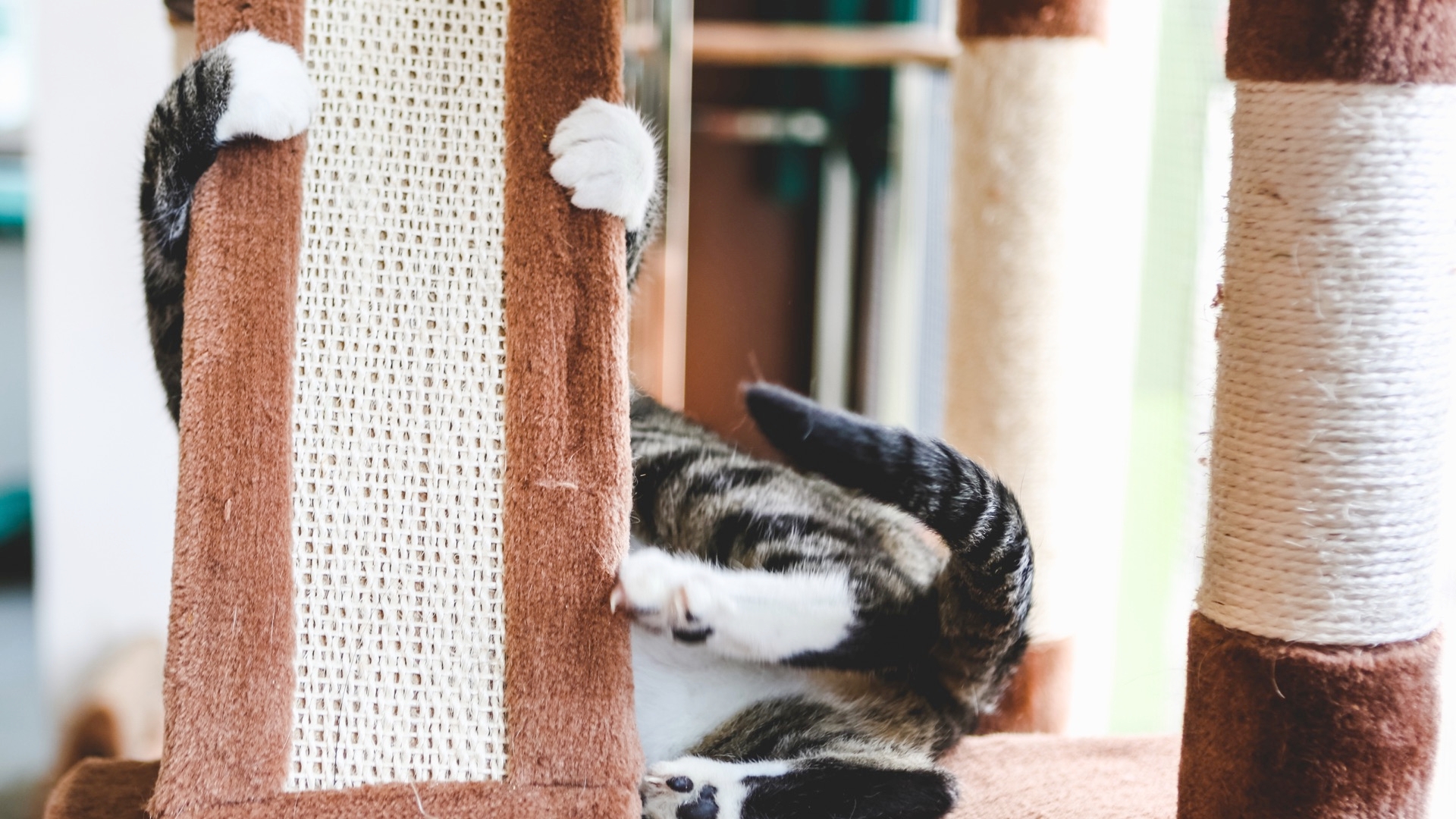Overstimulated Cats:
Summary:
Overstimulation is the swatting or biting behavior that cats exhibit in response to too much petting. Oftentimes, cats who are easily overstimulated are friendly cats who will seek attention from people, but then strike out after a short period of petting. The cause of overstimulation is not known, but there are ways to reduce the incidences of biting and swatting.
Overstimulation is the swatting or biting behavior that cats exhibit in response to too much petting. Oftentimes, cats who are easily overstimulated are friendly cats who will seek attention from people, but then strike out after a short period of petting. The cause of overstimulation is not known, but there are ways to reduce the incidences of biting and swatting.
Know the signs of overstimulation
Most cats will give you signals that they are becoming overstimulated. The signals may be very subtle or more obvious, depending on the cat. Warning signs that your cat may no longer want to be petted are: flicking or swishing of the tail, ears rotating to the side or back, staring, fur rippling on the back or sides, or tensing of the body. Again, the signals may be subtle, so it is important that you pay close attention to your cat as you pet her and be aware of her body language.
Less is more
The best way to reduce incidences of overstimulation is to stop petting your cat before she gets to the point of reacting to the touch. As soon as you see signs that your cat is beginning to dislike the attention, stop petting her. This does not mean that you have to leave the room or ignore the cat; you simply have to refrain from touching her. Most cats will remain happily on your lap or by your side even though you are no longer petting them. If you are able to consistently read your cat's body language and stop petting her before she acts out, you can eventually reduce or even stop the overstimulation altogether.
Although most cats will alert you to their imminent biting or swatting, not all cats exhibit warning signs. If your cat becomes overstimulated without warning, then it is important that you pay close attention to time when you're interacting with her. Watch the clock as you pet your cat. If your cat only tolerates three minutes of petting, then be sure to stop petting after one or two minutes. If your cat is completely unpredictable, then it is best (for your own safety) to use a wooden back scratcher (or similar tool) to pet her, so that if your cat strikes out, you will not be injured. But be sure not to overpet her even though you're not at risk of being hurt. It is still important to time these sessions so that you stop petting on a positive note. The positive notes will hopefully add up to your cat reacting well to petting in the future.
Inform houseguests
Even if you are used to and comfortable with your cat's overstimulation, don't expect your houseguests to feel the same way. Tell visitors not to pet the cat, and explain the cat's situation. If guests accidentally reach for or stroke the cat, don't be afraid to remind them not to touch her. If the cat jumps in the lap of a houseguest, allow her to remain as long as the visitor is comfortable with her being there. To remove the cat, ask your guest to stand up slowly, and the cat will jump off. It is important never to pick up an overstimulated cat as her aggression will most likely increase with the added contact.
Other alternatives
If, despite your best efforts, the cat continues to swat and bite when petted, you have other options. Ask your veterinarian about possible medications to help with the behavior, which might improve your cat's tolerance for affection. Another option is learning to simply enjoy your cat's company without petting her. Sometimes, we have to just accept our cats' personalities and learn to love them for who they are. If they enjoy being on your lap or next to you but without petting, it still makes for good company!


